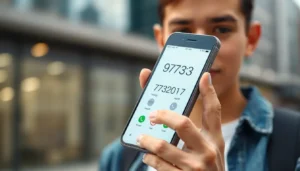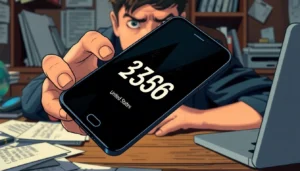Table of Contents
ToggleVirtual reality is transforming the fashion industry in ways that were once unimaginable. Designers and brands are harnessing this innovative technology to create immersive experiences that engage consumers like never before. From virtual runway shows to interactive fitting rooms, VR is reshaping how people discover and interact with fashion.
As the boundaries between the digital and physical worlds blur, fashion enthusiasts can now explore collections in a fully immersive environment. This shift not only enhances the shopping experience but also opens up new avenues for creativity and collaboration among designers. With virtual reality, the future of fashion is not just about wearing clothes; it’s about experiencing them in a whole new dimension.
Overview of Virtual Reality in Fashion
Virtual reality (VR) integrates advanced technology into the fashion industry, creating immersive experiences that engage consumers. VR enables brands to host virtual runway shows, allowing audiences to experience collections as if they were physically present. This innovation encourages real-time interaction and enhances accessibility, reaching global audiences without geographic limitations.
Interactive fitting rooms represent another significant application of VR. These digital environments allow customers to try on clothing virtually, reducing the need for physical changing rooms. Customers can engage with garments, mix and match items, and visualize how pieces fit without leaving their homes. This convenience boosts the overall shopping experience and enhances customer satisfaction.
Furthermore, VR fosters enhanced collaboration among designers. Virtual platforms offer spaces for creative exchange, allowing designers to showcase their work to a broader audience without physical constraints. Consequently, innovative ideas can flourish, paving the way for trends that resonate more profoundly with modern consumers.
The future of fashion lies in the convergence of technology and creativity, positioning VR as a pivotal element in redefining how individuals perceive and engage with fashion. Brands that adopt these technologies gain a competitive edge by offering unique experiences that captivate and retain consumer interest.
Applications of Virtual Reality in Fashion

Virtual reality (VR) offers innovative applications within the fashion industry, enhancing experiences for consumers and brands alike. Notable applications include virtual fashion shows and virtual showrooms, each transforming the way fashion is showcased and experienced.
Virtual Fashion Shows
Virtual fashion shows create immersive events that allow attendees to experience collections in real-time without physical constraints. These shows utilize 360-degree video technology, enabling viewers to navigate the space and appreciate every detail of the designs. Brands like Balenciaga and Gucci have successfully hosted virtual events, reaching wider audiences and generating global engagement. Virtual fashion shows eliminate geographical limitations, allowing viewers from different locations to attend without barriers. They also reduce environmental footprints by minimizing travel and resource consumption associated with traditional runway events.
Virtual Showrooms
Virtual showrooms revolutionize how consumers interact with fashion products. Brands like Zilingo and Farfetch utilize VR technology to create interactive environments where customers can explore collections digitally. Users can view clothing items in detail, adjust sizes, and visualize outfits on virtual avatars that reflect their own body types. This enhances confidence in purchasing decisions by providing a realistic representation of how items fit and look. Additionally, virtual showrooms streamline the shopping process, allowing customers to shop from the comfort of their homes while engaging with the brand in a dynamic environment. This approach not only boosts customer satisfaction but also increases conversion rates for fashion retailers.
Benefits of Virtual Reality in Fashion
Virtual reality (VR) brings numerous advantages to the fashion industry, enhancing consumer interactions and optimizing operational efficiencies. These benefits significantly transform shopping experiences and reduce costs for brands.
Enhanced Customer Experience
Enhanced customer experience defines VR’s impact in fashion. VR offers immersive environments where consumers can engage with collections interactively. Virtual fitting rooms allow customers to try clothing on digital avatars, providing a personalized shopping experience. Retailers like Zara and H&M utilize VR technology to create realistic simulations of garments, enabling customers to view accurate sizes and styles while increasing confidence in purchase decisions. Additionally, virtual runway shows eliminate geographical barriers, empowering global participation. Consumers can witness collections in real-time, free from physical limitations, enriching their overall engagement with brands.
Cost-Efficiency
Cost-efficiency emerges as a critical benefit of VR in fashion. Hosting virtual runway shows significantly reduces expenses linked to travel, venue rentals, and logistics. According to industry reports, brands can save up to 30% on marketing costs by adopting VR technology for product launches. Also, interactive showrooms can lower inventory costs, as retailers need fewer physical samples. In a digital space, brands can showcase a broader range of items, reaching a wider audience without incurring additional costs. Leveraging VR technology allows brands to invest more resources into innovation and creativity while maximizing profitability.
Challenges and Limitations
Virtual reality in fashion presents various challenges and limitations that brands must address. Accessibility to technology and user adoption serve as primary obstacles to widespread VR integration within the industry.
Technology Accessibility
Limited access to VR technology hampers its widespread adoption in fashion. High costs of VR headsets and compatible devices restrict usage among consumers. For instance, quality headsets can range from $200 to $1,000, creating barriers for average users. Additionally, reliance on robust internet connections poses further limitations; not all regions provide reliable access. Brands must consider these factors to develop inclusive strategies that facilitate broader access to virtual experiences.
User Adoption
User adoption remains a significant challenge as many consumers find VR technology unfamiliar. Comfort levels with using VR experiences vary, often leading to hesitance. Surveys indicate that only 25% of consumers have used VR for shopping, highlighting a need for education and outreach. Brands must focus on creating intuitive interfaces and engaging content to promote familiarity and ease of use. Overcoming psychological barriers and incorporating user-friendly designs will be essential in encouraging consumers to embrace virtual shopping experiences.
Future Trends in Virtual Reality in Fashion
Virtual reality in fashion continues to evolve, leading to innovative trends and applications that shape the industry.
Increased Personalization
Increased personalization through VR transforms consumer interactions with brands. Tailored virtual experiences allow users to customize clothing items and complete outfits based on individual preferences. Brands like Nike already incorporate VR to provide personalized recommendations during the shopping process, enhancing engagement and satisfaction.
Enhanced Sustainability Practices
Enhanced sustainability practices emerge as brands leverage VR to demonstrate their commitment to eco-friendly initiatives. Virtual fashion shows and showrooms minimize waste and reduce environmental footprints. Brands such as Stella McCartney showcase their sustainable collections through VR, emphasizing their ethical practices while reaching wider audiences without the environmental impact of physical events.
Integration of Augmented Reality
Integration of augmented reality (AR) alongside VR offers a more comprehensive shopping experience. Users can blend virtual elements with real-world settings, allowing them to visualize how clothing fits into their lives. Retailers like ASOS combine VR with AR technology, enabling customers to virtually try on outfits before making purchases, thus increasing conversion rates.
Social Experiences in Virtual Environments
Social experiences in virtual environments grow as a trend, allowing collaboration among users within VR spaces. Platforms such as VRChat facilitate social shopping experiences, where users can browse virtual stores with friends. This communal aspect encourages engagement and can lead to higher purchase rates through shared experiences.
Advancements in Technology and Accessibility
Advancements in technology will drive accessibility improvements in VR. Companies invest in more affordable VR headsets and user-friendly applications, aiming to lower entry barriers. With over 40% of consumers expressing interest in VR shopping experiences, brands that prioritize accessible technology will attract broader audiences.
Fashion Games and Collaborations
Fashion games and collaborations with gaming platforms introduce a new dimension to brand engagement. Brands like Balenciaga partner with popular video games like Fortnite, allowing players to dress their avatars in the latest styles. These collaborations not only increase visibility but also tap into the growing gaming market, attracting younger consumers.
Data-Driven Insights
Data-driven insights will play a crucial role in shaping future VR strategies. By collecting analytics from VR interactions, brands can gain valuable insights into consumer behaviors and preferences. This information helps brands refine product offerings and create targeted marketing strategies, increasing overall effectiveness.
Continuous Innovation
Continuous innovation within VR technology ensures the fashion industry remains dynamic and responsive to trends. Companies that invest in research and development can introduce cutting-edge features, fostering a unique shopping experience. Brands focused on innovation and customer engagement will likely outpace competitors in capturing market share.
Virtual reality is reshaping the fashion landscape by creating immersive experiences that redefine consumer engagement. As brands continue to explore innovative applications of VR technology, the potential for enhanced creativity and collaboration grows.
The shift towards virtual runway shows and interactive fitting rooms not only improves accessibility but also fosters a more sustainable approach to fashion. These advancements promise to streamline the shopping experience and enhance customer satisfaction.
With ongoing developments in VR and augmented reality, the fashion industry is set to become more dynamic and responsive to consumer needs. As brands adapt to these changes, they’ll likely gain a competitive edge by offering unique experiences that resonate with today’s digital-savvy shoppers.







